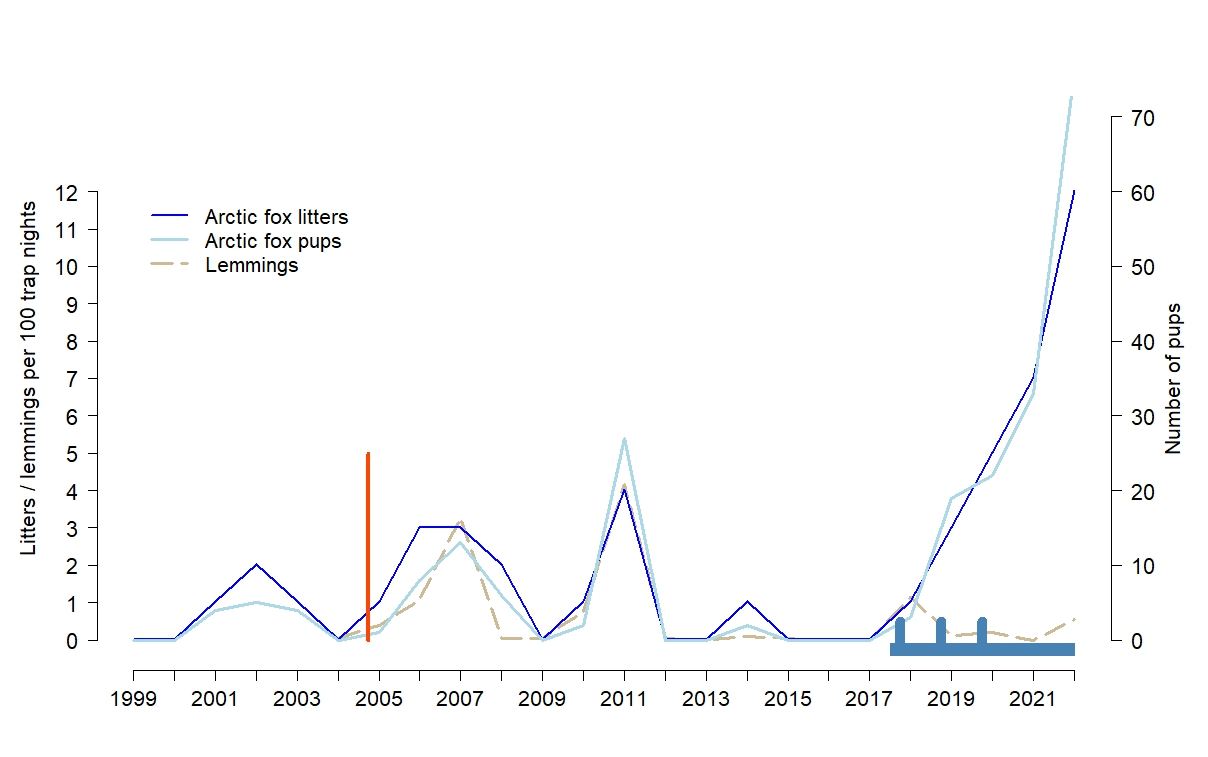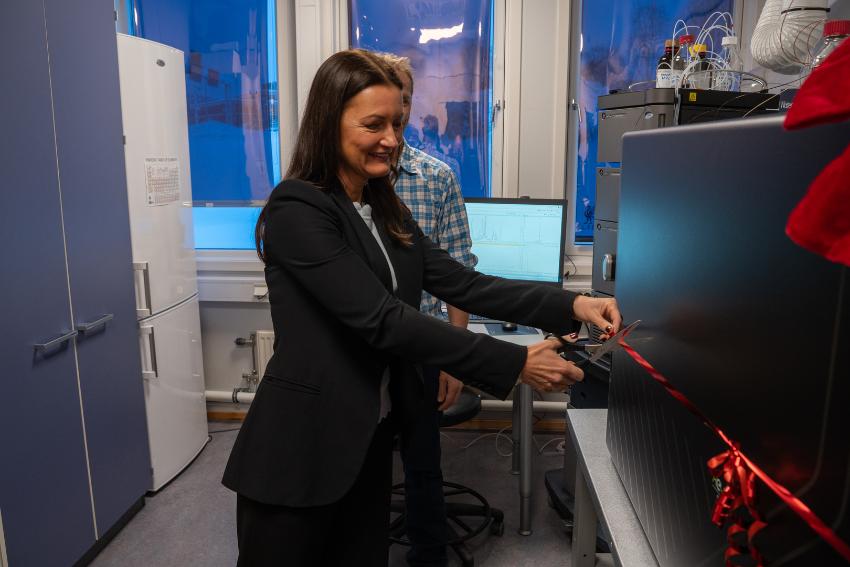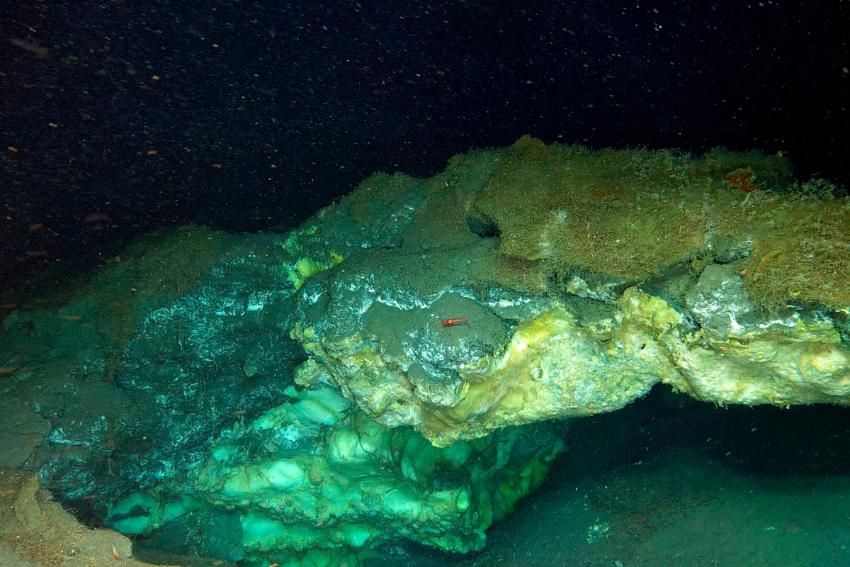Adaptive monitoring of the arctic fox in the Norwegian low Arctic
Arctic species are currently under multiple pressures and several are red-listed. Adaptive ecosystem-based monitoring and management applied to the critically endangered arctic fox in Finnmark, illustrates how such pressures can be uncovered and potentially mitigated.
In the beginning of the 20th century, the arctic fox was a common species in alpine and Arctic tundra across Norway. The low Arctic tundra in Finnmark was a stronghold for the species, likely because here – as in other parts of the circumpolar Arctic – arctic fox habitats (i.e. tundra) extend down to the coast and marine resources. However, a century later the arctic fox was red-listed as critically endangered in Norway, at least partly resulting from overharvesting before the species was protected in 1930.
Arctic fox in Finnmark
In Finnmark, only a few arctic foxes were left in 2004, when researchers from the University of Tromsø initiated the project “Arctic fox in Finnmark” as a part of the national arctic fox conservation programme of the Norwegian Environment Agency. The project aimed to uncover the drivers of the decline of the arctic fox by means of adaptive ecosystem-based monitoring. Adaptive monitoring is a hypothesis-driven approach to long-term research and often includes management interventions.

We hypothesised that the arctic fox was negatively affected by two driver pathways: First, as successful arctic fox reproduction depends on high abundance of lemmings as prey, disrupted lemming population cycles driven by climate warming are detrimental. Second, increasing human activity and warmer winters favour the expansion of red foxes that, because of their larger size, exclude arctic foxes from the best habitats. To test these hypotheses our monitoring included lemmings and other prey species, as well as the red fox and other competing carnivores. The management intervention consisted of culling red foxes on the Varanger Peninsula, while the adjacent Norkinn Peninsula and Ifjordfjellet served as control areas without any interventions. Management interventions, when implemented in experimental fashion with appropriate controls and good monitoring, provide efficient “learning by doing”.
Near regional extinction
In 2017, we analysed 13 years of monitoring data and assessed the effect of red fox culling. Negative impacts of competition with the red foxes were evident, as arctic foxes were able to use more habitats and resources where red foxes were culled. The monitoring data revealed that arctic fox reproduction was much more dependent on high abundance of lemmings than of other cyclic rodents (voles). Arctic fox pup production increased over the two first rodent cycles on the Varanger peninsula, with peaking lemming abundances in 2007 and 2011. However, the lemming population failed to peak again during the next seven years, during which only one arctic fox litter was recorded. With such failing reproduction, the arctic fox population declined and only two individuals were known to remain in Finnmark in 2017.
We proposed two hypotheses explaining this initial failure of population recovery: 1) The population was already so small at the onset of the project that it was little resilient to any adverse events (e.g. one failed lemming peak); 2) Due to climate-driven irregularity of the lemming cycle and the monopolisation of alternative food resources by the still-abundant red foxes, the low Arctic tundra in Finnmark is no longer able to harbour a viable arctic fox population.
New management interventions
Based on these results and hypotheses two new management interventions were implemented on the Varanger Peninsula from 2018: 65 captive-bred arctic foxes have been released over three years (2018-2020) and several tonnes of dog pellets have been provided in dispensers exclusively available to arctic foxes. These interventions were intended to push the Arctic fox population above the threshold of being vulnerable to adverse events (hypothesis 1 above). The new management interventions were implemented in close collaboration with the Norwegian Institute for Nature Research (NINA). NINA is responsible for the national arctic fox conservation programme, including a captive breeding facility at Oppdal in southern Norway. The “Arctic fox in Finnmark” project now also formally became an adaptive monitoring module within Climate-ecological Observatory for Arctic Tundra (COAT).
The new management actions have so far succeeded very well in increasing the Arctic fox population on the Varanger Peninsula. Reproduction commenced already in the summer after the first release of captive bred foxes in 2018. Since then, pup production has increased every year – even after the release of captive-bred foxes stopped in 2020. Interestingly, the supplemental feeding has allowed a high reproductive output even in low lemming years and thus decoupled arctic fox reproduction from the lemming cycle. The increase of the arctic fox on the Varanger Peninsula has also to led to considerable emigration. Varanger foxes have been observed further west and south in northern Norway, in northern Finland, and even on the Kola Peninsula. This provides hope for the reestablishment of a functioning arctic fox meta-population in northern Fennoscandia.
Future perspectives
The short-term success of this adaptive monitoring project may suggest a brighter future for the arctic fox in the Norwegian low Arctic. However, the critical next step will be to investigate whether the arctic fox – after having escaped the danger of being trapped in small and isolated populations – can persist as a large, viable meta-population in northern Fennoscandia without extraordinary conservation measures.
Climate warming, which is occurring particularly fast in eastern Finnmark, is predicted to push the low Arctic tundra out of its climatic envelope soon, with consequences that are presently difficult to predict. Whereas northward expansions of southern species (often generalists like the red fox) into the arctic tundra have been the subjects of considerable research, less is known about the processes leading to disappearance of arctic species at the southern edge of their distribution. Long-term, ecosystem-based monitoring – coupled with management interventions to speed up learning and potentially aiding conservation – is crucial if we are to understand and manage the fate of arctic specialist species such the arctic fox.

-
Fiskeri- og havbruksvitenskap - bachelor
Varighet: 3 År -
Fiskeri- og havbruksvitenskap - master
Varighet: 2 År -
Akvamedisin - master
Varighet: 5 År -
Bioteknologi - bachelor
Varighet: 3 År -
Arkeologi - master
Varighet: 2 År -
Peace and Conflict Transformation - master
Varighet: 2 År -
Geosciences - master
Varighet: 2 År -
Biology - master
Varighet: 2 År -
Technology and Safety - master
Varighet: 2 År -
Physics - master
Varighet: 2 År -
Mathematical Sciences - master
Varighet: 2 År -
Biomedicine - master
Varighet: 2 År -
Computational chemistry - master
Varighet: 2 År -
Law of the Sea - master
Varighet: 3 Semestre -
Biologi - bachelor
Varighet: 3 År -
Medisin profesjonsstudium
Varighet: 6 År -
Nordisk - årsstudium
Varighet: 1 År -
Luftfartsfag - bachelor
Varighet: 3 År -
Pedagogikk - bachelor
Varighet: 3 År -
Arkeologi - bachelor
Varighet: 3 År -
Informatikk, datamaskinsystemer - bachelor
Varighet: 3 År -
Informatikk, sivilingeniør - master
Varighet: 5 År -
Likestilling og kjønn - årsstudium
Varighet: 1 År -
Historie - bachelor
Varighet: 3 År -
Geovitenskap- bachelor
Varighet: 3 År -
Biomedisin - bachelor
Varighet: 3 År -
Kjemi - bachelor
Varighet: 3 År -
Samfunnssikkerhet - bachelor
Varighet: 3 År -
Matematikk - årsstudium
Varighet: 1 År -
Ergoterapi - bachelor
Varighet: 3 År -
Fysioterapi - bachelor
Varighet: 3 År -
Radiografi - bachelor
Varighet: 3 År -
Samfunnssikkerhet - master
Varighet: 2 År -
Kunst - bachelor
Varighet: 3 År -
Kunsthistorie - master
Varighet: 2 År -
Farmasi - bachelor
Varighet: 3 År -
Farmasi - master
Varighet: 2 År -
Religionsvitenskap - årsstudium
Varighet: 1 År -
Romfysikk, sivilingeniør - master
Varighet: 5 År -
Klima og miljøovervåkning, sivilingeniør - master
Varighet: 5 År -
Sosialantropologi - bachelor
Varighet: 3 År -
Bærekraftig teknologi, ingeniør - bachelor
Varighet: 3 År -
Historie - master
Varighet: 2 År -
Odontologi - master
Varighet: 5 År -
Filosofi - bachelor
Varighet: 3 År -
Anvendt fysikk og matematikk, sivilingeniør - master
Varighet: 5 År -
Barnevernsarbeid - master
Varighet: 2 År -
Forfatterstudium 2 - årsstudium
Varighet: 1 År -
Fine Art - master
Varighet: 2 År -
Barnevern - bachelor
Varighet: 3 År






